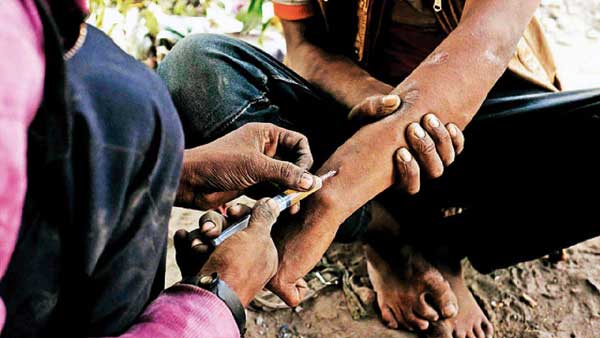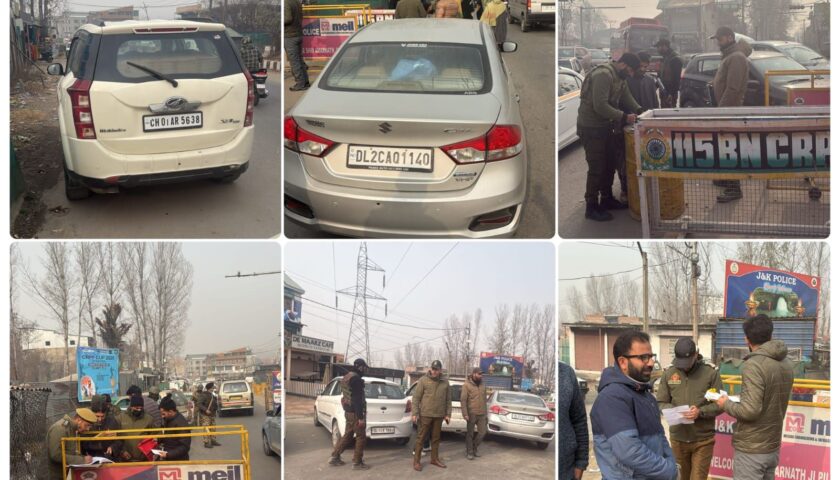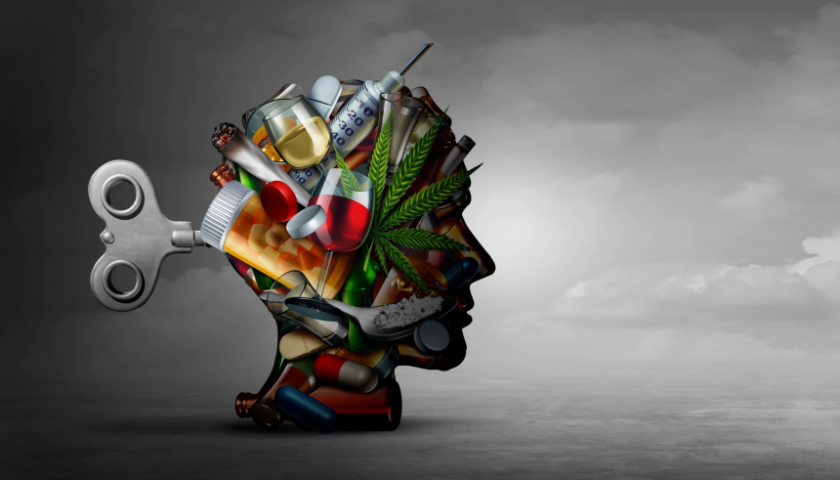The Shadow Pandemic: Understanding Kashmir’s Drug Crisis
By Javid Amin | May 12, 2025
Eighty-two kilometers from Srinagar, nestled among the majestic Himalayan foothills, 23-year-old Javaid (name changed) sits in a small rehabilitation center. His sunken eyes and trembling hands tell a story that has become increasingly common across the Kashmir Valley. Three years ago, he was a promising engineering student. Today, he’s fighting a desperate battle against heroin addiction.
“It started with charas (cannabis),” he recalls, his voice barely audible. “Then pills, and finally, heroin. Before I knew it, my life was crumbling around me.”
Javaid is not alone. Kashmir is witnessing an unprecedented surge in substance abuse that officials are now calling an “epidemic.” What was once a region known primarily for its political turmoil has evolved into a hotspot for drug abuse and addiction, with devastating consequences for individuals, families, and communities.
Recent data from Kashmir’s health department reveals a staggering 300% increase in patients seeking treatment for substance abuse over the past five years. Government-run de-addiction centers that once saw 15-20 patients monthly now report over 100 new cases each month. More alarmingly, experts believe these figures represent only the tip of the iceberg, as stigma and fear prevent many from seeking help.
“For every person who comes forward for treatment, there are at least five others suffering in silence,” says Dr. Arshad Hussain, a leading psychiatrist at the Institute of Mental Health and Neurosciences (IMHANS) in Srinagar. “We are witnessing a crisis of unprecedented proportions.”
The Changing Landscape: From Traditional Substances to Deadly Narcotics
The substance abuse problem in Kashmir has evolved dramatically over the past decade. While cannabis use has historical roots in the region’s culture, particularly among certain communities during religious festivals, today’s crisis is marked by far more dangerous substances.
Heroin: The New Epidemic
“Ten years ago, we rarely saw heroin cases,” notes Dr. Yasir Rather, who heads a major de-addiction facility in Srinagar. “Today, they constitute nearly 70% of our admissions.”
Locally known as “brown sugar,” heroin has flooded Kashmir’s drug market since 2016, with devastating consequences. Health officials report that the purity of street heroin has increased, making it more potent and addictive. More concerning is the shift toward injectable forms of the drug, bringing additional risks of HIV, Hepatitis C, and other blood-borne infections.
According to recent data from the Jammu and Kashmir AIDS Control Society, HIV prevalence among injecting drug users in certain districts has risen from less than 1% in 2016 to over 5% today – a clear indicator of the growing crisis.
Pharmaceutical Opioids and Prescription Drugs
Another troubling trend is the abuse of prescription medications. Drugs like Tramadol, benzodiazepines, and codeine-based cough syrups are being diverted from legitimate medical channels to feed addiction.
“These substances are often the gateway to harder drugs,” explains Farah Qayoom, a sociologist at Kashmir University who has extensively researched the region’s drug problem. “Their relative accessibility and lower stigma make them particularly dangerous as entry points to addiction.”
Pharmacies operating without proper oversight and online drug procurement have made these substances increasingly available to young Kashmiris, with devastating consequences.
Alcohol: A Growing Concern
Despite Kashmir’s predominantly Muslim population and cultural taboos surrounding alcohol consumption, liquor abuse has seen a significant rise, particularly in urban centers. Black market alcohol, often adulterated and dangerous, has claimed numerous lives in recent years.
“The prohibition creates a shadow market where quality control is non-existent,” explains Nazir Ahmad, a former excise official. “People are consuming industrial alcohol or poorly distilled local brews that can cause blindness or even death.”
Official figures suggest a 175% increase in alcohol-related admissions to major hospitals over the past three years, highlighting the growing dimension of this problem.
The Perfect Storm: Understanding What’s Driving Kashmir’s Drug Crisis
Kashmir’s drug epidemic doesn’t exist in isolation. It’s the product of a complex interplay of factors unique to the region’s geopolitical situation, economic conditions, and social dynamics.
Trauma and Mental Health: The Psychological Foundation
Decades of conflict have left deep psychological scars on Kashmir’s population. Studies indicate that nearly 45% of adults in the Valley suffer from some form of psychological distress – providing fertile ground for substance abuse as a form of self-medication.
“Many users start taking drugs to escape the reality of living in a conflict zone,” explains Dr. Manzoor Ahmad Zargar, clinical psychologist at Srinagar’s Psychiatric Diseases Hospital. “Substances offer temporary relief from anxiety, depression, and post-traumatic stress disorder, all of which are prevalent here.”
A 2023 survey by Kashmir University’s Department of Psychology found that 67% of substance users reported experiencing significant trauma before their addiction began. The study linked prolonged exposure to violence, loss of loved ones, and persistent uncertainty to higher rates of substance use.
“When conventional coping mechanisms fail, substances become an attractive alternative,” notes Dr. Zargar. “Without adequate mental health support, many turn to whatever provides immediate relief.”
Geographic Vulnerability: The Golden Crescent Connection
Kashmir’s geographic location has made it particularly vulnerable to drug trafficking. Situated near the “Golden Crescent” – the opium-producing region spanning Afghanistan, Pakistan, and Iran – the Valley has become a transit route for narcotics heading to other parts of India and beyond.
“Kashmir’s porous borders and challenging terrain create ideal conditions for trafficking,” explains a senior police official who requested anonymity. “What began as a transit route has evolved into a consumption market.”
According to Narcotics Control Bureau data, drug seizures in Kashmir have increased by 400% since 2018. Particularly concerning is the rise in heroin confiscations, which jumped from 12 kilograms in 2018 to over 350 kilograms in 2024.
Law enforcement officials point to sophisticated networks that utilize traditional smuggling routes through dense forests and high mountain passes – areas where surveillance remains challenging despite technological advancements.
Economic Distress: Unemployment and Hopelessness
Kashmir’s troubled economy provides another catalyst for the drug crisis. With unemployment rates hovering around 25% – nearly twice the national average – and particularly high among educated youth, economic distress has created a generation vulnerable to substance abuse.
“There’s a direct correlation between joblessness and rising addiction,” says economist Dr. Nisar Ali, formerly with Kashmir University. “When young people see no future, substances offer an escape from reality and disappointment.”
The situation worsened after 2019’s administrative changes and the COVID-19 pandemic, which devastated Kashmir’s tourism-dependent economy. Many young people found themselves not only unemployed but also dealing with the psychological impact of prolonged lockdowns and internet restrictions.
In some areas, drug trafficking itself has become an economic activity, with vulnerable youth recruited as carriers and dealers. Police reports indicate that college students are increasingly involved in small-scale distribution, motivated primarily by financial incentives rather than personal use.
Youth Vulnerability: Cultural Shifts and Identity Crisis
Kashmir’s younger generation finds itself caught between tradition and modernity, creating identity conflicts that can increase vulnerability to substance use.
“There’s a cultural disconnect happening,” explains sociologist Dr. Farah Qayoom. “Traditional social structures that once provided guidance and boundaries are weakening, while new pressures – academic competition, career uncertainty, identity questions – are intensifying.”
The average age of first drug use in Kashmir has dropped from 18 years in 2010 to just 13 years in 2024, according to data from rehabilitation centers. School-based surveys reveal that substance experimentation often begins in early adolescence, with cannabis and prescription medications being the most common entry points.
Social media influence, peer pressure, and the glamorization of certain substances have accelerated this trend, particularly in urban areas where traditional family oversight has diminished.
The Human Cost: How Drugs Are Reshaping Kashmir’s Society
The consequences of Kashmir’s drug epidemic extend far beyond individual users, affecting families, communities, and the broader social fabric of the region.
Families in Crisis: The Collateral Damage
For every person struggling with addiction, an entire family suffers. Financial ruin, broken relationships, and profound shame have become common experiences for families across the Valley.
“I sold my daughter’s gold, then my land, and finally my house – all to fund my son’s heroin habit and treatment,” says Ghulam Mohammad, a retired teacher from central Kashmir. “Now we live in a rented room, and the family is shattered.”
Women often bear the heaviest burden when male family members develop substance use disorders. Increased domestic violence, economic insecurity, and social isolation become daily realities for many wives and mothers.
A recent study by Kashmir’s Directorate of Health Services found that families with a substance-using member spend an average of 70% of their income on drugs and treatment – pushing many middle-class families into poverty and debt.
Rising Crime and Social Disruption
As addiction rates climb, so do crime rates. Theft, burglary, and robbery have surged in both urban and rural areas as users desperately seek funds to support their habits.
“Property crimes have increased by 60% over five years,” notes a senior police official. “Most perpetrators are young men with substance use disorders who need quick money.”
More disturbing is the rise in violence associated with drug trafficking. Territorial disputes between rival dealers have led to several high-profile murders in recent years, introducing a new dimension of criminality to a region already familiar with violence.
In some neighborhoods of Srinagar, residents have formed community patrols after sunset – a testament to growing insecurity linked to substance abuse and associated criminality.
Health System Under Strain
Kashmir’s healthcare infrastructure, already weakened by decades of conflict, is buckling under the weight of the addiction crisis. Emergency departments report being overwhelmed with overdose cases, while specialized treatment facilities face months-long waiting lists.
“We’re forced to turn away patients every day,” says Dr. Mubashir Rasool, who works at a government de-addiction center in Srinagar. “Our 30-bed facility currently houses over 50 patients, with hundreds more waiting for admission.”
The surge in injection drug use has brought additional health challenges. Needle-sharing has led to outbreaks of Hepatitis C in several districts, creating what health officials describe as a “dual epidemic” that further strains limited resources.
Fighting Back: Response Efforts and Challenges
Faced with this growing crisis, various stakeholders – from government agencies to community organizations – have mobilized response efforts, though significant challenges remain.
Government Initiatives: Building Infrastructure
The administration has responded by establishing de-addiction centers in district hospitals and launching awareness campaigns in educational institutions. A central drug de-addiction policy was introduced in 2022, focusing on prevention, treatment, and rehabilitation.
“We’ve increased bed capacity for addiction treatment by 200% over three years,” says Dr. Mushtaq Ahmad Rather, Director of Health Services. “Additionally, we’re training primary healthcare providers to identify and manage substance use disorders at the community level.”
The government has also strengthened the legal framework around drug offenses, with the Narcotics Drugs and Psychotropic Substances (NDPS) Act being enforced more stringently. Police departments have established specialized anti-narcotics units in every district.
However, critics argue that these efforts remain insufficient given the scale of the problem.
Law Enforcement Challenges
Despite intensified efforts, law enforcement agencies face significant challenges in disrupting drug supply networks. The rugged terrain, complex border situation, and sophisticated trafficking operations make interdiction difficult.
“For every major supplier we apprehend, three more emerge,” acknowledges a senior police officer. “We need better intelligence coordination and modern equipment to effectively combat trafficking.”
Police officials also highlight the challenge of distinguishing between users who need medical help and traffickers who warrant legal action – a distinction that current laws don’t always facilitate.
Recent innovations include the use of drone surveillance along known trafficking routes and the establishment of a dedicated cyber cell to monitor online drug transactions, which have become increasingly common during the pandemic.
Civil Society and Religious Response
Kashmir’s civil society has responded to the crisis through grassroots initiatives. NGOs like “New Hope” and “Kashmir Rising” have established counseling centers, support groups for families, and vocational training programs for recovering users.
Religious institutions have also joined the fight. Mosques across the Valley now regularly include anti-drug messaging in Friday sermons, with several prominent religious leaders launching dedicated awareness campaigns.
“In Islam, protecting human life and intellect are fundamental principles,” explains Mufti Nazir Ahmad, a religious scholar leading anti-drug initiatives. “We’re working to harness religious sentiment to counter substance abuse while providing spiritual support to those in recovery.”
Such faith-based approaches have proven particularly effective in conservative communities where religious influence remains strong but medical understanding of addiction may be limited.
Innovative Approaches: Peer Support and Harm Reduction
Some organizations are pioneering innovative approaches to addiction response. One such initiative involves training recovered users as peer counselors who can connect with current users more effectively than traditional healthcare providers.
“When I tell my story, they listen because I’ve walked their path,” says Faisal, a former heroin user who now works as a peer educator. “I can reach people who would never approach a doctor or policeman.”
Harm reduction strategies – focused on minimizing the negative consequences of drug use rather than solely on abstinence – are also gaining traction. These include needle exchange programs to prevent disease transmission and the distribution of naloxone, a medication that can reverse opioid overdoses.
However, these approaches remain controversial in Kashmir’s conservative society, with critics arguing they enable continued drug use rather than addressing the underlying problem.
The Road Ahead: Building a Comprehensive Response
Experts agree that addressing Kashmir’s drug crisis requires a coordinated, multi-sectoral approach that balances enforcement, treatment, prevention, and social support.
Strengthening Prevention Efforts
Prevention remains the most cost-effective strategy for addressing substance abuse. Educational institutions, from primary schools to universities, have a crucial role to play in equipping young people with knowledge and skills to resist drug use.
“We need age-appropriate prevention programs starting as early as fifth grade,” says education specialist Dr. Arifa Jan. “These should focus not just on information about drugs but also on life skills, emotional regulation, and healthy coping mechanisms.”
Recent pilot programs combining life skills training with mental health support in selected schools have shown promising results, with participants demonstrating increased awareness and more negative attitudes toward substances. Scaling such initiatives across the education system presents both an opportunity and a challenge.
Expanding Treatment Options
While inpatient rehabilitation remains crucial for severe cases, experts emphasize the need for a broader continuum of care options – from outpatient services to long-term recovery support.
“Most users don’t need hospitalization, but they do need consistent support,” explains addiction specialist Dr. Arshad Hussain. “We need community-based services that allow people to recover while maintaining their normal lives.”
Medication-assisted treatment (MAT), which combines behavioral therapy with medications like buprenorphine to manage opioid dependence, has shown particular promise. However, its availability remains limited to major urban centers, leaving rural areas underserved.
Telemedicine initiatives launched during the COVID-19 pandemic have demonstrated potential for extending specialized addiction services to remote areas, though internet connectivity issues and digital literacy remain barriers.
Addressing Root Causes
Any comprehensive solution must address the underlying factors driving substance use – from trauma and mental health challenges to unemployment and social alienation.
“We can’t treat our way out of this epidemic,” notes sociologist Dr. Qayoom. “Without addressing the root causes, we’ll continue seeing new generations fall into addiction.”
Economic revitalization, youth engagement programs, and expanded mental health services are essential components of this approach. Several organizations have begun integrating vocational training into rehabilitation programs, helping recovering users build sustainable livelihoods and reducing relapse risks.
Community Involvement and Destigmatization
Perhaps most crucial is shifting social attitudes toward addiction – from viewing it as a moral failing to recognizing it as a treatable health condition.
“Stigma kills more people than overdoses,” asserts Dr. Rather. “When we shame people with substance use disorders, we drive them underground and away from help.”
Public education campaigns featuring recovery stories have begun challenging stereotypes, while support groups for families provide both practical assistance and emotional solidarity.
Community ownership of both the problem and its solutions is essential for sustainable progress. Neighborhood committees in several areas have pioneered local surveillance systems to identify drug hotspots and connect vulnerable individuals with services before addiction takes hold.
Hope Amid Crisis: Stories of Recovery and Resilience
Despite the grim statistics, stories of recovery offer hope that Kashmir’s drug crisis is not insurmountable.
Ishfaq, a 27-year-old from South Kashmir, spent five years addicted to heroin before finding recovery through a combination of medical treatment, family support, and religious faith. Today, he runs a small business and volunteers counseling other young people struggling with addiction.
“Recovery gave me back not just my health, but my dignity and purpose,” he says. “If I could find my way back from that darkness, anyone can.”
Families, too, are showing remarkable resilience. Support groups for parents and spouses of people with substance use disorders have sprung up across the Valley, providing both practical guidance and emotional solidarity.
“When my son first entered treatment, I thought our family was alone in this nightmare,” says Haleema, whose son has maintained sobriety for two years. “Finding other mothers going through the same struggle gave me strength to continue supporting his recovery.”
Such stories challenge the fatalism that often surrounds addiction discussions in Kashmir, demonstrating that with appropriate support, recovery is not only possible but happening every day across the Valley.
Bottom-Line: A Watershed Moment for Kashmir
Kashmir stands at a crossroads. The decisions made today by policymakers, communities, and individuals will determine whether the drug epidemic continues its devastating march or begins to recede.
The stakes could not be higher. Beyond the immediate suffering of individuals and families affected by addiction lies a broader threat to Kashmir’s social cohesion and future development. A generation lost to substance abuse would represent not just a human tragedy but a profound setback to the region’s hopes for peace and prosperity.
Yet there are reasons for cautious optimism. The growing recognition of addiction as a public health issue rather than simply a criminal or moral failing represents an important paradigm shift. Increased resource allocation, innovative approaches, and community mobilization all suggest a maturing response to the crisis.
As Dr. Hussain reflects, “This epidemic has forced Kashmir to confront issues we’ve long ignored – mental health, family dynamics, youth aspiration, and community responsibility. If we rise to this challenge with compassion and commitment, we may emerge stronger for having faced it.”
For Javaid, the engineering student now in recovery, each day brings both challenges and hope. “I lost years to addiction, but I refuse to lose my entire future,” he says. “Kashmir has suffered enough tragedy. We need to write a different story for ourselves – one of healing and recovery.”
That different story is possible, but it will require sustained effort from every sector of Kashmir society – and a commitment to seeing those affected by substance use disorders not as problems to be solved, but as people to be supported on their journey back to health and dignity.




